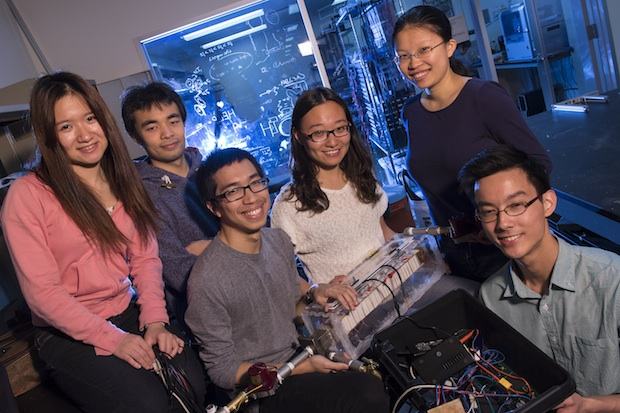The ISS may soon recycle extra heat into electricity
The International Space Station (ISS) does use a lot of sophisticated electronics and throws out the heat generated by the electric components into the big bad void. It's a waste of energy and talented engineering students at the Rice University want to fix this problem. They've developed a mechanism to tap this excess heat, which would otherwise go waste, and convert it into useful electricity to power a number of on-board machines on the ISS. The students call their team "Space Ring" and promise that their new thermoelectric generator can help conserve a lot of energy on the International Space Station.

Photo Credit: Jeff Fitlow
NASA's engineers seem to be impressed by the team's work and have promised to include the finding of the research in their next power system design for the ISS and other spacecrafts. Patrick George, project Manager at NASA says that the system would allow for more energy for various scientific experiments to be performed at the ISS. The thermoelectric generator designed by the team Space Ring works on the seebeck effect: the more the difference in the temperature, the greater is the amount of current produced inside the material.
The prototype design has been demonstrated to power onboard pumps. The team however believes that the state of the art generators would operate at about 15% efficiency can be useful in sending the excess electricity back to the spacecraft. Check out the video created by team Space Ring -
Source: #-Link-Snipped-#

Photo Credit: Jeff Fitlow
NASA's engineers seem to be impressed by the team's work and have promised to include the finding of the research in their next power system design for the ISS and other spacecrafts. Patrick George, project Manager at NASA says that the system would allow for more energy for various scientific experiments to be performed at the ISS. The thermoelectric generator designed by the team Space Ring works on the seebeck effect: the more the difference in the temperature, the greater is the amount of current produced inside the material.
The prototype design has been demonstrated to power onboard pumps. The team however believes that the state of the art generators would operate at about 15% efficiency can be useful in sending the excess electricity back to the spacecraft. Check out the video created by team Space Ring -
0
